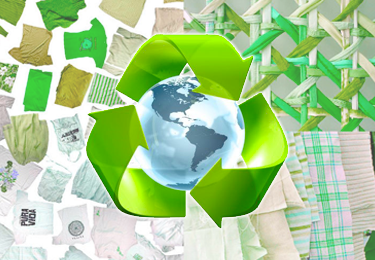TEXTILE RECYCLING AND
ITS ENVIRONMENTAL IMPACT
The textile and clothing industry is the biggest polluter in the world.
According to the UN agency on Climate Change, the fashion industry contributes for 10% of global greenhouse gas emissions due to its long supply chains and use of intensive energy in its production.
Almost 20% of the global wastewater is produced by the fashion industry.
Cotton cultivation accounts for 24% of insecticides and 11% of pesticides, despite using only 3% of the world’s arable land.
20,000 liters is the amount of water needed to produce one kilogram of cotton, equivalent to a single shirt and jeans.
The textile industry is one of the top three water waste industries in China, discharging more than 2.5 billion tons of wastewater annually.
USA Environmental Protection Agency informs that 16 million tons of textile waste were generated in 2015, of which 11 million tons were discarded in landfills.
About 15% of the fabric intended for clothing ends up on the cutting room floor. This rate of waste has been tolerated across the industry for decades.
An average of 32 kg of shoes and clothes are thrown away annually by each consumer.
About 85% of this waste goes to landfills, where it occupies about 5% of the space, and the quantity is increasing.
Up to 95% of textiles that go to landfills each year could be recycled.
Source: https://edgexpo.com/fashion-industry-waste-statistics/


